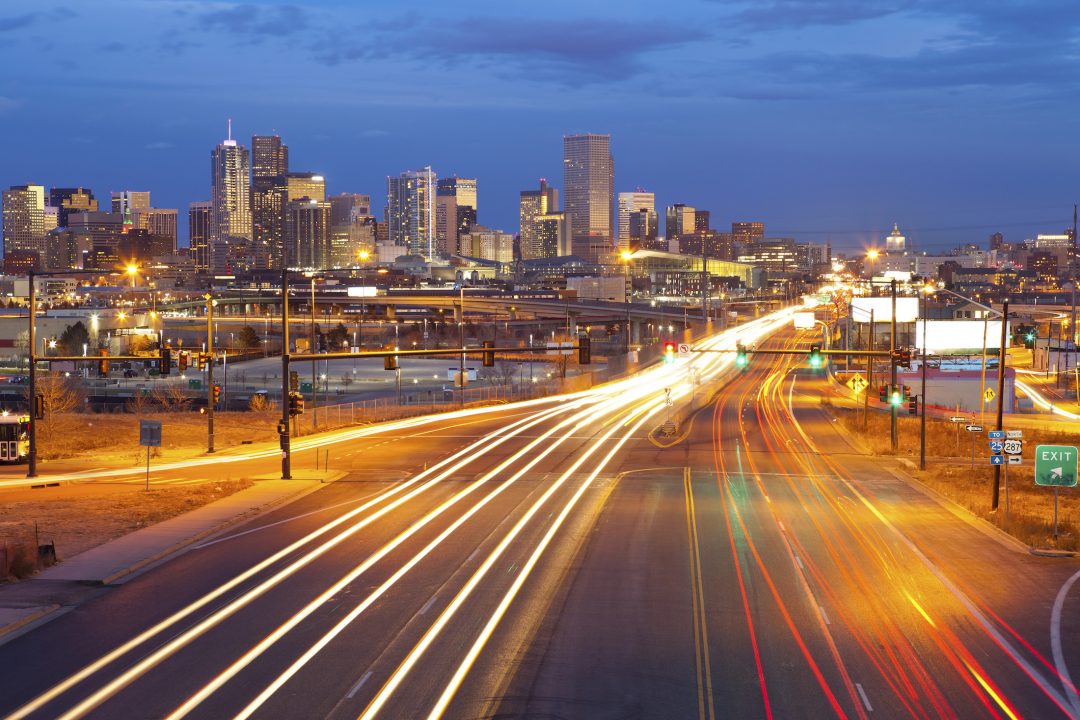Colfax should be a walker’s paradise. It is lined with some of Denver’s most beloved shops, restaurants, cafes, bars, and concert venues. Its status as the busiest bus corridor in the city means it is usually teeming with pedestrians. But Colfax can be an unpleasant and even unsafe place to walk. We’ve audited Colfax from West to East, highlighting the factors that make it so wicked for pedestrians.
West Colfax
In 2014, we partnered with PlaceMatters, the West Colfax BID, and Ken Schroeppel’s Planning Methods class at the University of Colorado, Denver, College of Architecture and Planning partnered to audit the pedestrian environment along the West Colfax corridor. Trained neighborhood volunteers and planning students used the WALKscope mobile tool to collect data about sidewalks, intersections, and pedestrian counts throughout the area roughly bounded by Sheridan Boulevard to the west, Zuni Street to the east, 19th Avenue to the north, and 10th Avenue to the south. A total of 1,532 data points were collected: 1,062 sidewalks, 425 intersections, and 45 pedestrian counts. Major findings of this assessment include the following:
- The places where the most people walk, including Colfax Avenue and the areas adjacent to light rail stations, are the least pleasant and the least safe for pedestrians.
- Unsafe traffic speeds are a major problem on Colfax.
- Crossing distance is also a problem on Colfax. Pedestrians must cross 5 or more lanes to get across Colfax at many intersections.
- Crosswalks are few and far between on Colfax, where they are needed most. In many cases, people have to walk several blocks out of their way to cross at an intersection with crosswalks.
- The lack of buffers between sidewalks and the street degrades the pedestrian environment. With few exceptions, the sidewalks along Colfax are all “attached,” meaning they are directly adjacent to the street with no buffer.
East Colfax
In 2015, we partnered with the Colfax Business Improvement District and Ken Schroeppel’s Planning Methods class at the University of Colorado, Denver, College of Architecture and Planning partnered to audit the pedestrian environment along the East Colfax corridor. Urban planning students used the WALKscope mobile tool to collect data about sidewalks and intersections in the area bounded by Colorado Blvd to the east, Broadway to the west, 17th Ave to the north, and 13th Ave to the south. This report focuses on the portion of the East Colfax corridor bounded by Grant St to the west, Josephine St to the east, 16th Ave to the north, and 14th Ave to the south. A total of 387 data points were collected within this area, including 316 sidewalks and 71 intersections. This report also summarizes pedestrian and bicycle count data from CDOT, bus ridership data from the Regional Transportation District, vehicular traffic volume from the Denver Regional Council of Governments, and crash data from the City and County of Denver. Major findings of this assessment include the following:
- Most sidewalks (62%) in the study area were given high overall quality ratings of 4 or 5, but intersections fared much worse, with only 32% receiving high overall quality ratings. The lowest overall quality ratings (for both sidewalks and intersections) were most concentrated along Colfax Ave.
- Unsafe traffic speeds are a major problem along 14th Ave and especially Colfax Ave.
- Crossing distance is also a problem on Colfax. Pedestrians must cross five or more lanes to get across Colfax at almost every intersection.
- While most of the study area benefits from good tree coverage, trees and quality landscaping are notably lacking along most of Colfax Ave.
- Most sidewalks along Colfax are all “attached,” meaning they are directly adjacent to the street with no buffer.
- Crosswalks are missing at many intersections along busy Colfax Ave and 14th Ave. In some cases, there are three to four block gaps between marked crosswalks.
- Average daily pedestrian counts are relatively consistent across the length of the corridor (roughly around 2,500 at most count locations) with significant spikes on the west end of the corridor and near the intersection of Colfax, Park, and Franklin (where average daily ped counts are approximately 4,000)
- Roughly one third of the total volume of people moving along the East Colfax corridor are walking, biking, or riding the bus, and this proportion is expected to increase with the planned implementation of bus rapid transit (BRT).
- There were 105 crashes involving pedestrians within the study area from 2012 to 2015. The vast majority (89) were located along Colfax Ave. Most (73) resulted in injuries, and one resulted in a fatality.
- Intersections with the highest number of crashes involving pedestrians include Colfax/Park/Franklin (10 crashes), Colfax/Pennsylvania (9), Colfax/Washington (7), Colfax/Logan (6), Colfax/High (6), Colfax/Downing (5), Colfax Clarkson (5), Colfax/Ogden (5), and Colfax/Pearl (5).

